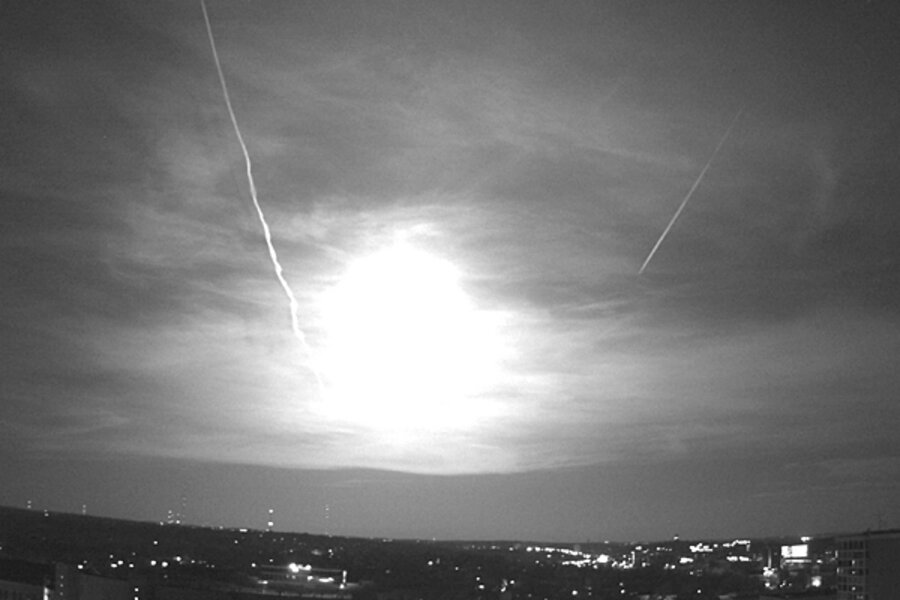Fireball in sky: meteor in Wisconsin rattles homes, nerves
Loading...
A large flash of light at about 10 p.m. Wednesday night – described as a fireball in the sky by eyewitnesses from Wisconsin to Missouri – was most likely a meteor from the ongoing Gamma Virginids meteor shower.
It is unknown whether the meteor in Wisconsin, which was seen flying eastward at an altitude of 6,000 to 12,000 feet, hit the ground or burned up in the atmosphere.
There were reports of an accompanying sonic boom, “along with shaking of homes, trees and various other objects including wind chimes,” according to the National Weather Service.
Meteors entering Earth’s atmosphere – often seen as “shooting stars” – are a common event. But relatively few pack the punch of Wednesday’s event, University of Wisconsin Space Place Director James Lattis told the Wisconsin State Journal.
“Even something relatively small, like the size of a golf ball, will light up the sky when it comes through,” he said. “They tend to disintegrate completely while they’re still many miles above the earth.”
As is the case after major meteor events, professional and amateur astronomers are trying to discover whether the meteor made landfall. The International Meteor Organization has a form for reporting fireball sightings on its website.
The site notes that only about 1 in 1,200 observed meteors reaches the magnitude to be categorized as a fireball.
Wednesday night, state and local 911 centers were inundated with phone calls from people reporting the phenomenon, Sheriff Aaron Booker of Illinois’ Winnebago County told the Rockford Register Star.
The meteor’s progress stopped in the southwest corner of Wisconsin, Ashley Sears, a meteorologist with the National Weather Service's Milwaukee office, told the Reno Gazette-Journal. There have been no injuries or damage reported.
Large meteors have been sighted over Wisconsin before. A major meteor event was recorded on January 15, 2007.
The Gamma Virginids meteor showed began April 4 and is expected to conclude sometime next week. Peak activity was expected to be Wednesday and Thursday, coinciding last night’s spectacle.





